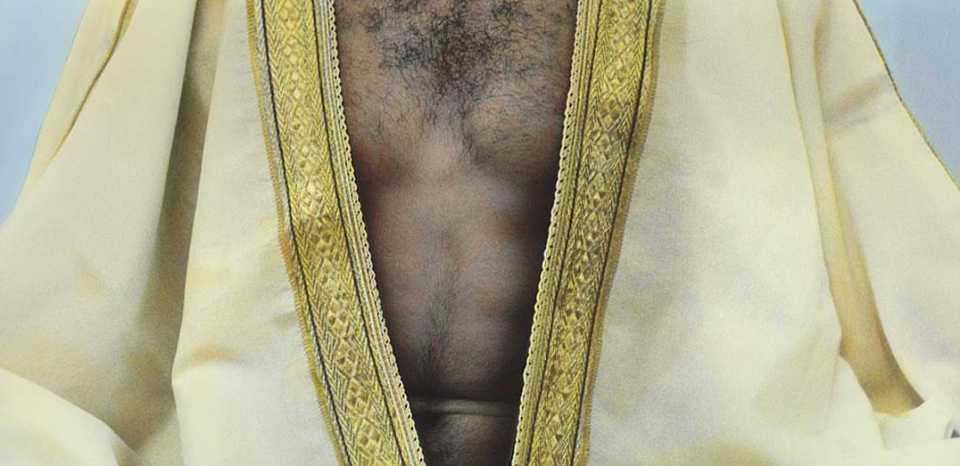When art is done containing footage or reference to the Middle East, there is a typical arsenal of imagery that pops up. From camels standing in the middle of the dessert to exotic belly dancers, to heavily gender- segregated spaces, the Middle East is more often than not portrayed as a region stuck in its own time, haunted by its own backwardness.
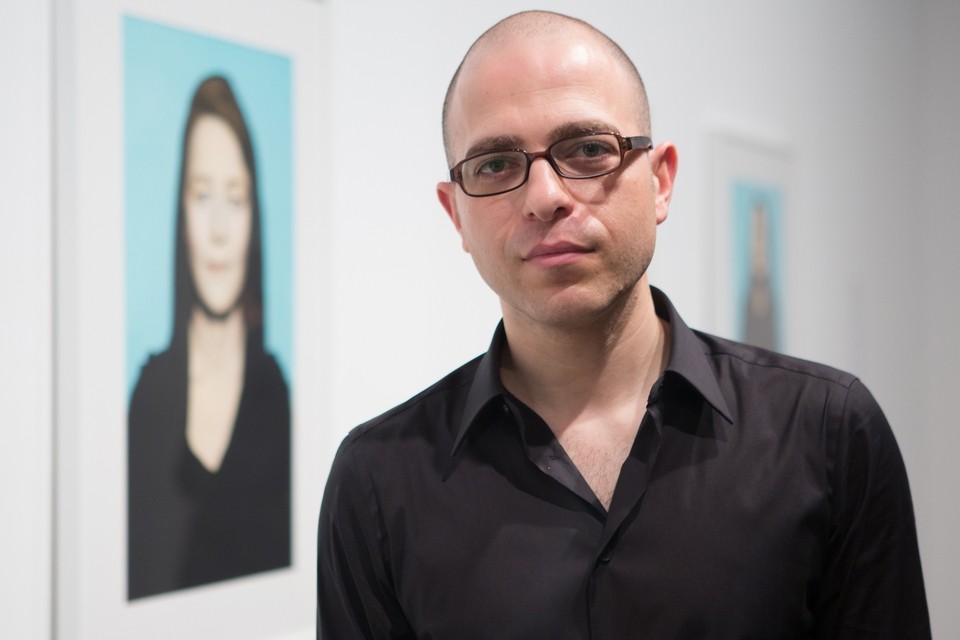
This is not to say that some cultural laws and values do not reflect the past that is long gone and definitely, requires a re-visit. Rather, it is to say that there is something truly problematic if a monolithic visual account comes to dominate your mind when someone says ‘Middle East.’
This relationship between word (Middle East) and image (stuck in time) is something that Mr. Youssef Nabil’s artwork is clearly seeking to re-define, in a way that simultaneously breaks local cultural taboos.

Consider the artwork above, for example, containing an image of a woman lying down wearing what looks like an elaborately decorated top half of a belly-dancing costume, and holding a shisha.
Nabil is taunting the Orientalist notion of the belly dancer, the maleness of the shisha in some Arabic cultural contexts, and the woman’s capacity to own her sexuality and femininity.
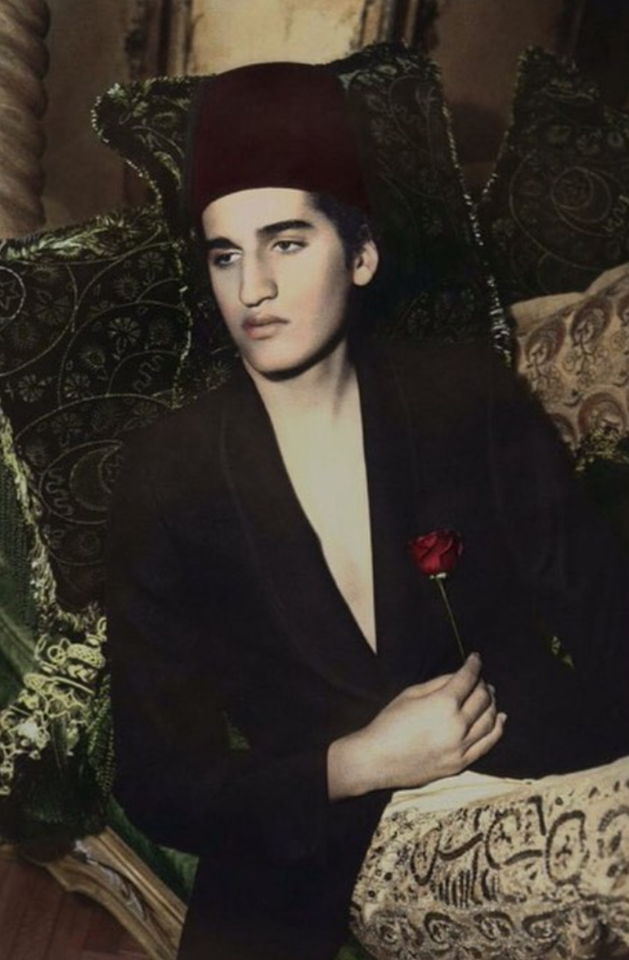
Consider, also, the photograph above containing the strongly masculine element of the ‘Tarboosh’: a red top-hat wore by men throughout Turkey and parts of its Ottoman Empire, namely Egypt, as a sign of prestige, status, and masculinity.
The masculinity and history associated with the Tarboosh, appear in contrast with a male model dressed in more modern attire and made to have very soft facial features via the lighting placement.
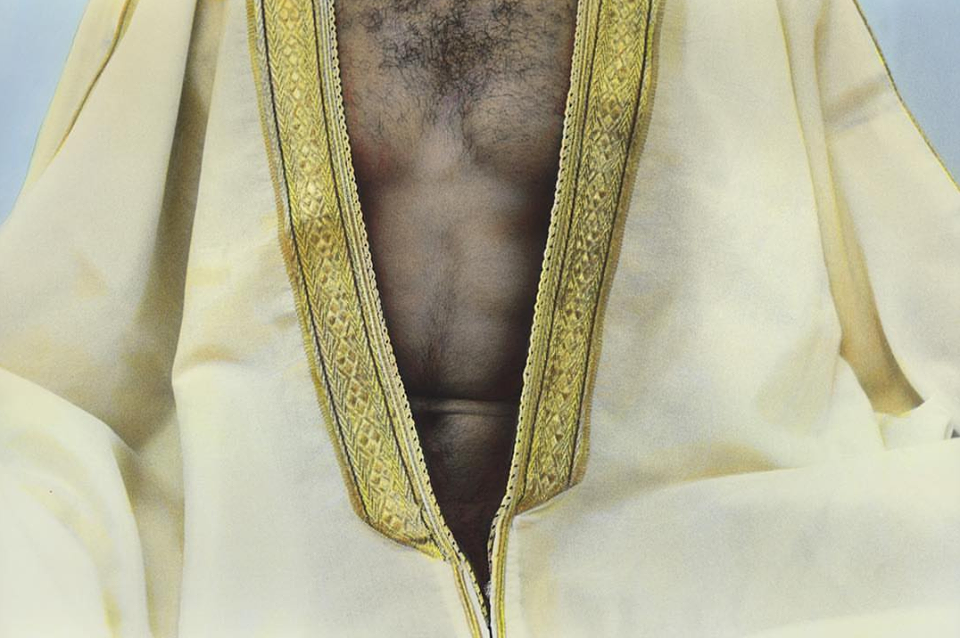
Moreover, the plunging v-neckline -typically associated with hyper-feminine attire- is utilized by Nabil to add to the play on gender in this photograph, and several others.
These elements of past and present, west, and non-West, femininity, and masculinity, appear quite distinctly in most of Nabil’s photographs.
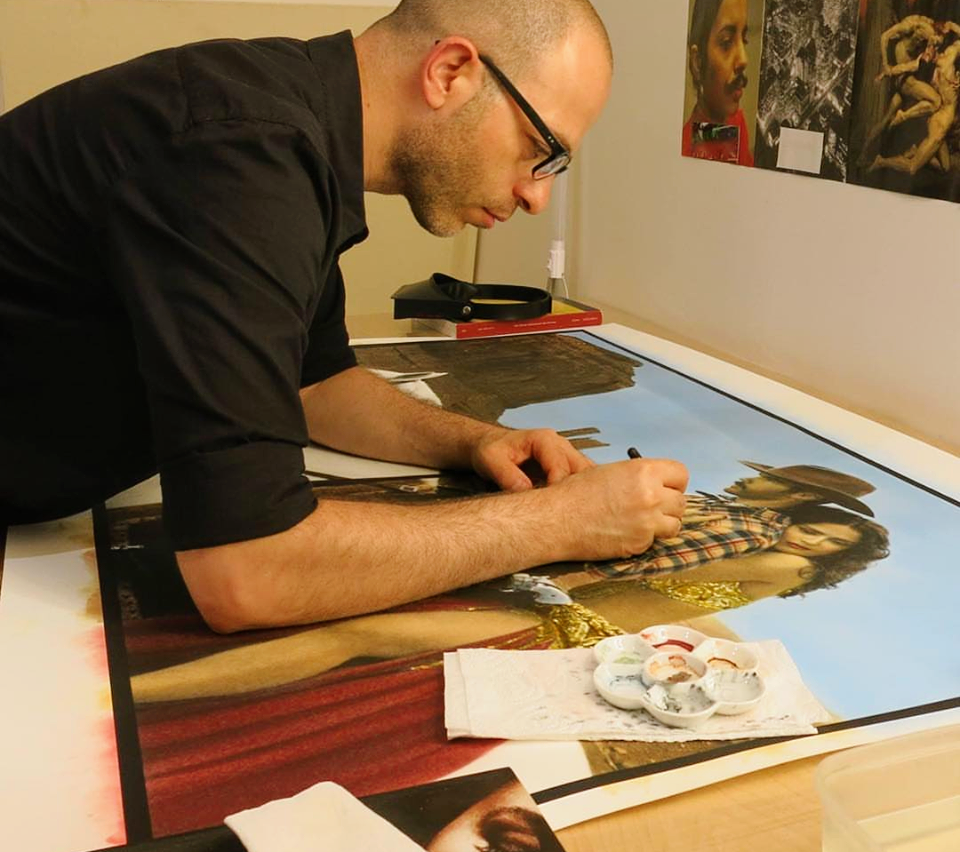
What adds further uniqueness to his photographs is the fact that Nabil takes them in black-and-white film, and then he personally proceeds to fill them in with the necessary colors.
Nabil has also photographed some of Egypt’s A-list stars, including Nabila Ebeid, Fifi Abdou, Simone.

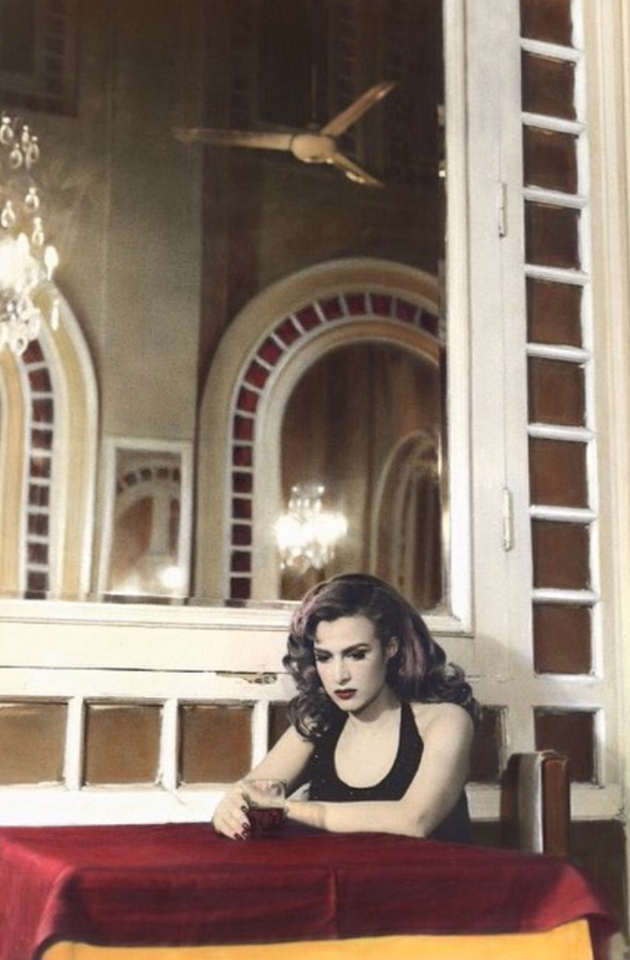
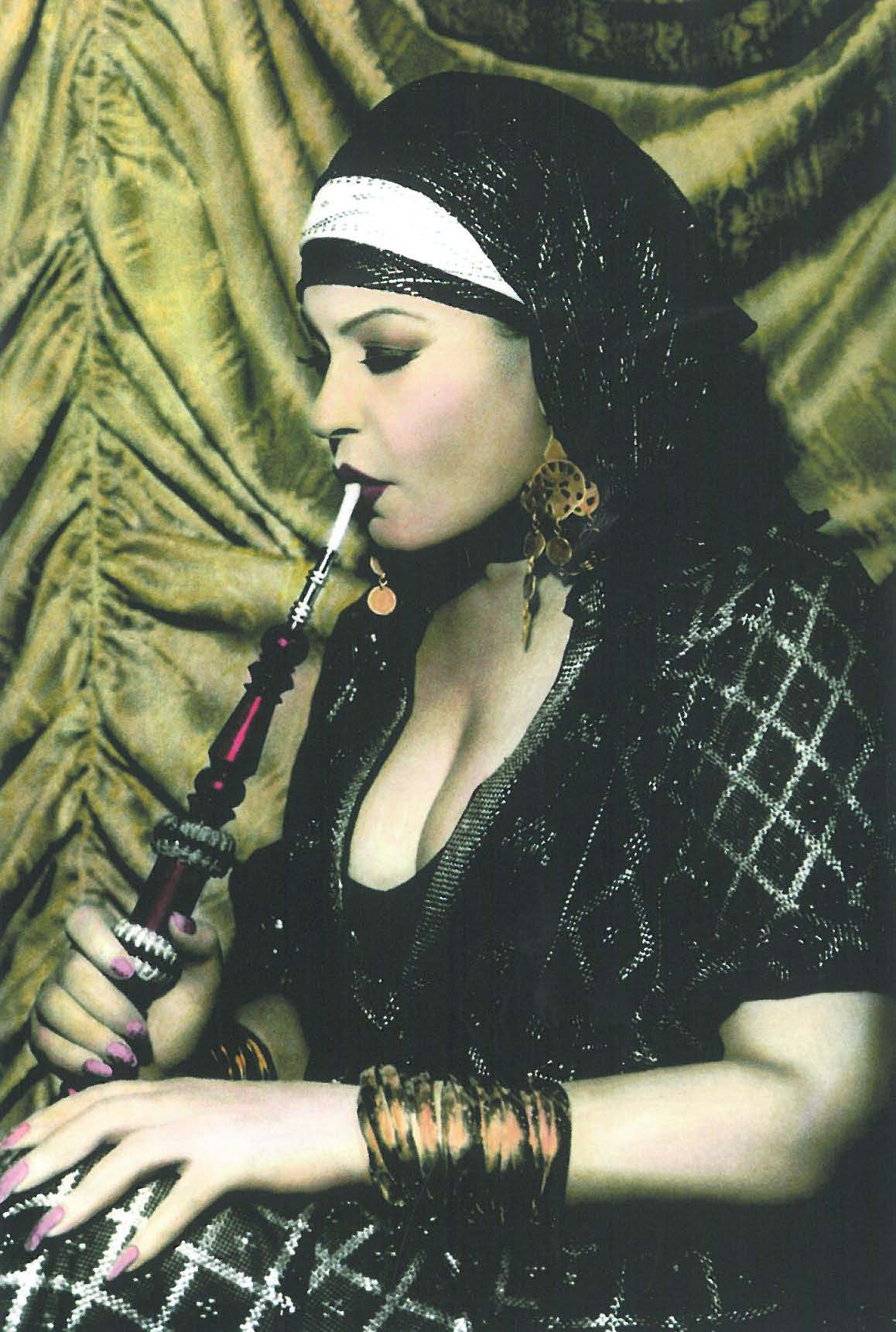
WE SAID THIS: Follow Mr. Youssef Nabil on his Instagram for more amazing photographs @mryoussefnabil!


